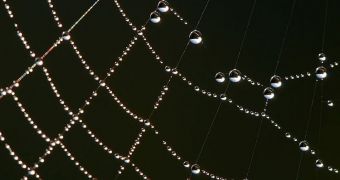University of Bristol investigators say – in a paper published in the March 20 online issue of the journal Chemical Science – that the presence of water is not necessarily required for the survival of proteins.
For the longest time, it was believed that this class of molecules could not exist without water, since the chemical was believed to be essential for many of the processes proteins need to complete in order to function properly.
The findings have significant implications. In addition to opening the way for the development of new industrial enzymes – that may contribute to lowering manufacturing costs for a variety of chemicals and consumer products – it also shows that alien worlds without liquid water might support life.
While a lot of studies still remain to be done on the issue, the fact remains that the presence of liquid water on an exoplanet's surface was considered to be a make-it-or-break-it factor in determining whether that world has the potential to support the development of life as we know it.
UB scientists focused on the role that water plays in the survival and function of these large organic molecules. Proteins are involved in converting food into energy, in transporting oxygen to cells via the bloodstream, in defending our bodies against invaders, and many other processes.
Since the dawn of evolution, proteins have always existed in water-rich environments, including those found in living things. Our bodies, for example, are made up of more than 70 percent water, Astrobiology Magazine reports.
In the recent study, scientists have been able to demonstrate that myoglobin, an oxygen-carrying protein similar to hemoglobin, is capable of refolding in an environment nearly devoid of water molecules. This process was previously thought to be impossible in the absence of water.
“We achieved this by attaching polymer molecules to the surface of the protein and then removing the water to give a viscous liquid which, when cooled from a temperature as high as 155°C, refolded back to its original structure,” UB School of Chemistry investigator, Adam Perriman, explains.
This was achieved through the use of a spectroscopic technique called circular dichroism, the team reports in Chemical Science, in a paper entitled “Hyper-thermal stability and unprecedented re-folding of solvent-free liquid myoglobin.”
“We then used the Circular Dichroism beamline (B23) at Diamond Light Source, the UK’s national synchrotron science facility in Oxfordshire, to track the refolding of the myoglobin structure and were astounded when we became aware of the extremely high thermal resistance of the new material,” Perriman concludes.

 14 DAY TRIAL //
14 DAY TRIAL //